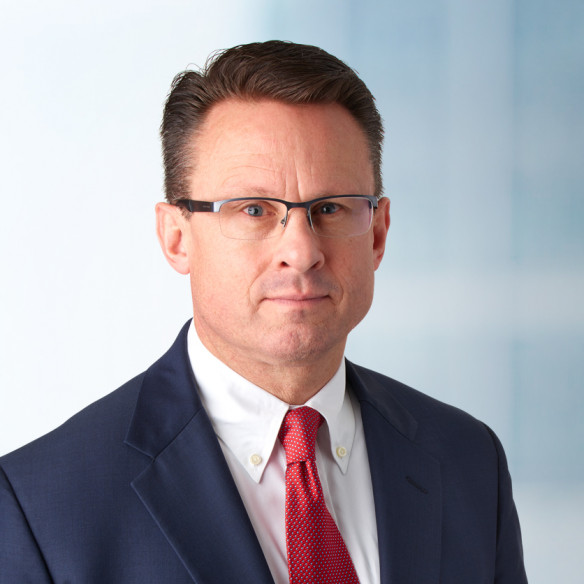Financing a Medical Practice Group
Within the broader market for health care financing, physician and dental practice groups (Medical Practice Group(s)) have become a popular segment for loans by private credit providers.
In 2019, clients of the Proskauer Private Credit Group provided more than $1.4 billion of financing to Medical Practice Groups ranging in size from $5 million to more than $160 million in EBITDA. Despite their current popularity among equity sponsors and private credit providers, financing the acquisition of individual practices and fulfilling working capital and others needs of Medical Practice Groups is a complicated exercise and requires that capital providers overcome a unique set of structural challenges.
First and foremost, to comply with state corporate practice of medicine statutes, equity sponsors and private lenders are compelled to invest their capital through one or more management service organizations (MSOs).
As individual practices are added to an existing Medical Practice Group, the MSOs typically employ non-clinical staff and acquire non-medical assets such as furniture, fixtures, equipment and leases. The MSOs provide each practice within a Medical Practice Group with office space, equipment, back office services and working capital funding. The relationship between the MSO and Medical Practice Group is memorialized in a management services agreement.
From the lender’s perspective, the MSO is the borrower, and its assets serve as collateral for the loan. When the financial performance of a Medical Practice Groups is strong, this loan poses no problem. However, when a Medical Practice Group experiences physician or dentist turnover, cuts to or changes in reimbursement rates or other setbacks to financial performance, this loan structure can represent a significant obstacle to a loan recovery.
In this article, we examine strategies specifically tailored to loan restructurings involving Medical Practice Groups. While the structural limitations described above can be difficult to overcome following a default, careful planning at inception of the loan can help mitigate harm and maximize recoveries.
Overcoming the Challenges
In a non-health care setting, the best loan recovery strategy for a private credit lender may be to acquire the borrower’s business as a going concern, right size the balance sheet, and nurture the company through an operational turnaround. When corrective measures have been implemented, and the business is performing well, it can be sold at a fair market price.
As we discussed in Part I of this series, this can be a difficult strategy to execute when it involves a financially troubled health care borrower. This challenge is even more pronounced for Medical Practice Groups where a successful turnaround is entirely dependent upon buy-in and active support from the doctors, dentists, and other health care providers without whom there is no medical practice.
The traditional method used in other sectors to maintain the loyalty and cooperation of key employees is to insist on restrictive covenants, including non-competition and non-solicitation agreements. Unfortunately, these tools are often not available or as effective for Medical Practice Groups, because many states prohibit or limit the use of non-competition agreements for doctors or other licensed healthcare professionals.
Nevertheless, there are steps lenders can take at the structuring stage of a loan facility to harmonize the interests of the lender with the doctors and the dentists in the event of a restructuring.
- Aligning the Interests of Providers – When health care provider compensation is fixed or guaranteed upon the acquisition of an individual practice, or in some cases actually reduced to normalized compensation, providers have less incentive to work to maximize production or to improve financial performance. Conversely, if a portion of the sale consideration is deferred, and if such payments are subordinated to the MSO’s senior credit facility, then providers will have ample reason to be productive, to improve performance or to come to the table with the senior lenders if the financial performance of the Medical Practice Group declines. In addition, many sponsors require selling physicians to “roll-over” a meaningful portion of the consideration into management company equity, which also aligns financial interests.
- Erect Barriers to Exit – Another strategy for maintaining physician stickiness in the absence of a non-compete agreement is to focus on increasing the costs of relocation. Practice group acquisitions vary in the scope of the non-clinical assets and operations that are transferred to the MSO. The greater the degree of operational control at the MSO level, and facilities, equipment and information systems owned by the MSO, the more difficult it becomes for a provider to depart the affiliated practice and transition to a new one—and the more appealing it becomes for providers to stay where they are. In addition to preserving the value of the underlying Medical Practice Group by adhering the medical providers to the business, and aligning economic incentives with the lenders, loan recoveries are also increased by minimizing the costs and complexities of future debt restructurings. The length, complexity and consequent cost of any debt restructuring will depend on the unique facts of the case, including the intricacy of the capital structure, and the strategic path pursued.
Carefully designed loan facilities can also have a material impact on the difficulty associated with a debt restructuring and corporate turnaround effort. Consider the following:
- Consolidate Liabilities at the MSO: Consolidating operations and related debts at the MSO level, including real estate and equipment leases, vendor contracts, and personnel related liabilities can simplify a future debt restructuring or bankruptcy proceeding. In the event of financial distress, the ability to exercise leverage against creditors of the MSO, to bind those creditors as a class and to reject burdensome contracts (among other things) is the best way to effect a comprehensive debt restructuring. Allowing operating debts to be incurred by individual practices comprising the Medical Practice Group will make a debt restructuring more complicated and expensive. If ongoing liabilities are incurred by the MSO, they can be addressed on a consolidated basis with a restructuring of (or bankruptcy filing by) the MSO rather than the individual practices. For MSOs with a large number of individual practices under management, the decrease in complexity and cost could be significant.
- Increase Leverage Over Practice Level Creditors: In a well-structured Medical Practice Group financing, the obligations of individual practices to pay management fees and otherwise perform under a management services agreement will be secured by a pledge of the individual practices’ assets (including a perfected security interest in the cash of each practice). In turn, these security interests can be collaterally assigned by the MSO to its private creditor provider as collateral for the MSO’s credit facility. Ensuring that these security interests are both comprehensive and perfected gives a private credit provider negotiating leverage against any unsecured creditors at the practice level.
Private Credit Restructuring
It is often true that the best loan recovery strategy is developed by a team of highly experienced restructuring professionals after the occurrence of an event of default. In situations involving Medical Practice Groups, however, a well-structured loan facility is the foundation for a successful restructuring and turnaround strategy.
Reproduced with permission. Published Dec., 26, 2019. Copyright 2019 The Bureau of National Affairs, Inc. 800-372- 1033. For further use, please visit http://www.bna.com/copyright-permission-request/






